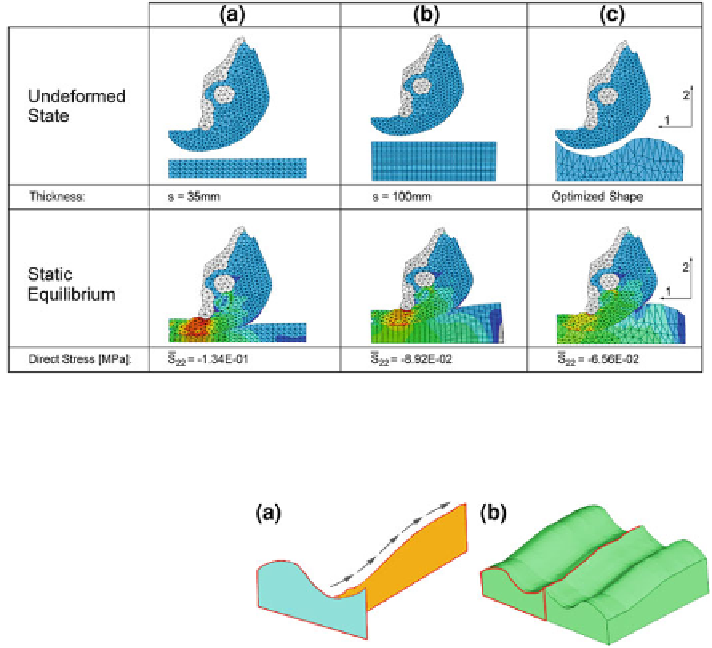Biomedical Engineering Reference
In-Depth Information
Fig. 7.47 Comparison of two different cushion shapes to the optimized transversal shape:
a block-shaped, 35 mm, b block-shaped, 100 mm, c optimized transversal shape
Fig. 7.48 a Extrusion of the
optimized transversal shape
along the contour of the
optimized sagittal shape, and
b resulting three-dimensional
geometry
Results indicate that direct stress at the skin surface is reduced by nearly 50 %
using the optimized cushion shape. Similar results can be observed at the fat-
muscle interface as well as deeper inside the muscle tissue.
Due to these simulation results, the approach of support shape optimization using
plane strain conditions as a basis to generate a continuum support geometry,
potentially reducing tissue stress seems practicable. Clearly, in the same manner, the
continuum model can be directly employed in the shape optimization process where
node coordinates of the 3D-cushion model are parameterized. Such an approach,
however, involves increased optimization time as well as potential convergence
difficulties due to increased model as well as contact interaction complexity.
7.2.4 Design Principles
In
Sect. 7.2.2
, Fig.
7.37
, different stages of tissue deformation are depicted during
the process of sitting down on a soft foam support. To quantify corresponding
tissue displacements, tissue thickness in the initial undeformed configuration,

